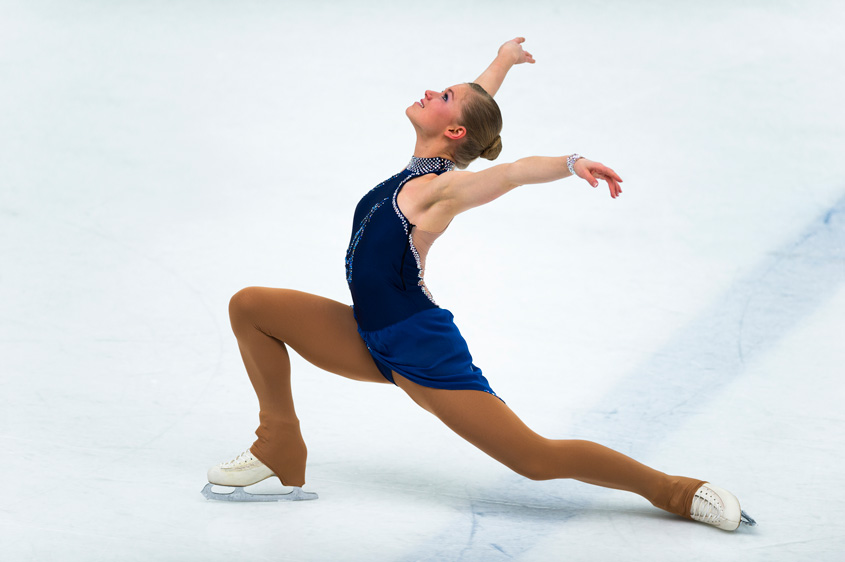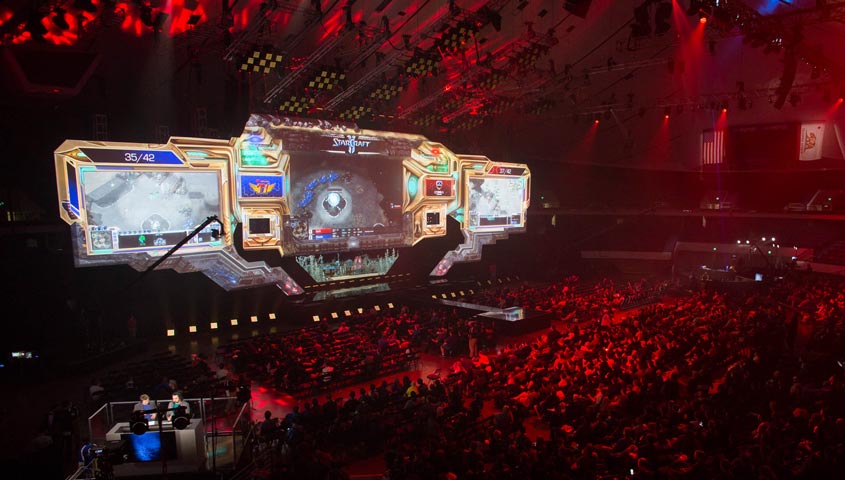By Stephen Townley, Active Rights Management Limited, United Kingdom
Over the last 40 years, I have been involved in the sports industry and have sometimes noticed sports bodies and athletes peering jealously over a fence. On the other side of that fence are the intellectual property (IP) rights afforded to literary, dramatic, musical and artistic works. Athletes have seen protection for actors, singers, musicians, dancers, and others, while performing copyrighted works, but typically, have not themselves benefitted from such protection.

Up until a recent proposal by the European Parliament (discussed below), the reason for that was clear. A sports event per se was not a work that qualified for protection under copyright law. Its outcome is unscripted and uncertain. Some have argued, however, that choreographed works do exist in a sports event and athletes have asked why there is a difference in performing an ice dance at the Olympic Games and performing one in an ice dance show (which would ordinarily qualify for copyright protection) when they retire?
Rephrasing the sports IP question around eSport
As outlined in my February 2018 article in the WIPO Magazine, eSport: everything to play for, which explores some of the similarities and differences between sport and eSport, I noted that eSports are a broad subset of the video and computer game spectrum. Players may play directly against each other or in parallel against a computer. Some eSports “borrow” a specific set of rules from an existing sport, but for the most popular and financially successful games, the rules and mechanics of play are created by the game’s designer.
The purpose of rulemaking in sports is aligned to promoting fair competition, the capabilities of the human body and ensuring the integrity of the outcome of a sports performance. These rules do not so easily align with video content, which often suspends reality and the limits of the human body to deliver an entertainment experience. Indeed, that tension was apparent in December 2018 at the International Olympic Committee (IOC) summit, where it was widely reported via the Associated Press that the IOC “gets cold on eSports”. It is now widely acknowledged that eSports are not a simple “bolt on” to a sports event.
A further difference between sports and eSports is that copyright is likely to subsist in the development of an eSports game, whereas it does not in sports per se.
Sports are a global industry but relies on fragmented IP
It is widely estimated that the sports industry accounts for at least 3 percent of global GDP. The fact that there are more listed members of FIFA than there are countries in the world is indicative of sports’ universal appeal. The global nature of the industry and major sports events creates complicated issues, not least because there is no single approach to the way in which content is covered by the IP laws of different countries and associated rights are protected.
The current sports industry approach to monetizing its assets relies on an amalgam of contract rights, IP rights, and a basket of analogous and neighboring rights that are often specific to an event or jurisdiction.
Certain countries have recognized neighboring rights for sports events. These include, for illustration only, France, Italy, Mexico, the Netherlands and the United States. Some sports bodies require special protection under domestic legislation as a condition of hosting an event. For example, the International Olympic Committee requires special protection for the word “Olympics,” and imposes conditions on advertising in areas in and around the venue. Also, athletes may be afforded rights of privacy in some jurisdictions but not in others. Such rights may provide protection similar to that afforded to actors but without the need to perform a copyrightable work.
Technology has not waited in the wings for clarity and consistency to be provided by governments and nor do sports.
The European perspective
For some time, the European community, as reflected in its 2007 White Paper on Sport, has been aware of the specificity of sport and that it might be afforded further protection. In the joined cases involving Football Association Premier League v QC Leisure and Karen Murphy v Media Protection Services Limited (C-403/08 and C-429/08), the Court of Justice of the European Union (CJEU) acknowledged that “sports events such as football matches cannot be considered intellectual creations or works and so cannot be protected by copyright.” It was further noted, however, that the unique and individual character of a sports event can transform it into subject matter worthy of protection.
Latest developments on the proposed Digital Copyright Directive in Europe
On September 12, 2018, the European Parliament approved amendments to the draft Directive on Copyright in the Digital Single Market (COM (2016) 0593). These included significant new protection for the sports event organizers. Amendment number 76 to the directive reads as follows:
“….
Title IV – Chapter 1a (new) – Article 12a (new)
CHAPTER 1a:
Protection of sport event organizers
Article 12a:
Member states shall provide sport event organisers with the rights provided for in Article 2 and Article 3 (2) of directive 2001/29/EC and Article 7 of directive 2006/115/EC.”
The inclusion of the reference to sports was promoted by European Parliament’s Committee on Legal Affairs. The amendment was in part justified by comments cited above in the Murphy case.
Article 2 of the InfoSoc Directive 2001/29/EC confers exclusive authority on designated copyright owners (which include authors, performers and broadcasters) to prevent reproduction of their works, performances and content.

Article 3 (2) of that Directive enables those rights owners to prevent members of the public from accessing content without their prior authorization.
“Trialogue” conversations began between representatives of the European Council, European Parliament and the European Commission after the approval of amendments to the Directive on Copyright in the Digital Single Market on September 12, 2018. On September 26, 2018, the General Secretariat of the Council of the European Union failed to carry forward the above amendments. And on the February 20, 2019, the Council of the European Union provided a new text for the directive. All mention of sports had been dropped. That version of the text went to the European Council and European Parliament for adoption. On March 26, 2019, following a debate at a plenary session of the European Parliament, the final version of the directive was passed.
The failure of the European Commission to provide enhanced protection for sports content in a directive dealing with digital copyright is hardly surprising insofar as sports per se is not protectable under copyright law. Enhanced protection for those organizing a sports event and of athletes’ sporting performance is desirable. Certainly if the purpose of the directive is to help ensure that those who use content (such as Internet platforms) contribute to the cost of its production.
How the sports industry monetizes its assets
The current sports industry approach to monetizing its assets relies on an amalgam of contract rights, IP rights, and a basket of analogous and neighboring rights that are often specific to an event or jurisdiction. These rights are first aggregated within a structure that might involve a team, league, competition, game, federation or similar and or any combination thereof.
Commercial income generated by major sports events is underpinned by media rights. The sale of these rights contributes eye-watering sums of money to traditional sports. These rights are also the primary means of engaging with a very broad fan base. Media rights for the FIFA World Cup are running at more than half of all commercial revenues according to an analysis by consultants, KPMG.
The media rights chain probably begins with whoever has the key to the door of the venue. The English case of Sports and General Press Agency v “Our Dogs” Publishing Company, Limited [1917] (2 KB 125) provides the explanation for the industry model.
Swinfen Eady L.J. commented (at pp 127 to 128) as follows:
“… It is said that …] had been put to trouble and expense in organizing the show… No doubt …they had the right of allowing those persons to enter of whom they approved and excluding those of whom they did not, and that right carried with it the right of laying down conditions binding on the parties admitted.”
In practice, this has become the adopted approach: first the sports organizer will acquire a clean venue and then impose conditions on the media and others in return for permission to enter. A broadcast or transmission of content from the venue, irrespective of the sports event itself being a copyrightable work, will become a copyrighted work upon recording or transmission. The sports rights owner will usually obtain an assignment of the copyright in the signal from the media company both for archive and anti-piracy purposes, so the sports organizer will end up owning IP rights.
Challenges
Controlling access is not a perfect solution. Where additional jurisdictional protection does not exist, and an event takes place outside controlled venues, such as a yacht race or a city marathon, then a sports organizer’s IP weakness is exposed. The industry has nevertheless developed and applied other solutions to tackle this problem, often referred to as ambush marketing (see page 22). Remedies are often jurisdiction or event specific. Some may involve IP rights and others may not. For example, personality and privacy rights, unfair advertising and competition, trademark infringements, trespass, trading standards, and licensing legislation. An evolution of these topics can be found in Sponsorship Sport Art and Leisure (1984, Townley and Grayson).
Further challenges have emerged for sports with the Internet. Once a live sports event has finished, its premium value is lost forever. High-quality content can now be generated within a venue on hand-held devices and promptly streamed. The traceability of those who infringe IP in sports content has become a massive problem. Content piracy frequently takes place in jurisdictions where enforcement is not straightforward, and by the time the event has finished the pirate has shut down or moved on. Criminal sanctions are vital. Article 11 and 17 (formerly Article 13) of the European Directive may help where the sports organizer or athlete becomes the copyright owner through an assignment.
Sports continue to need a coordinated global effort to address these issues. The failed intervention of the European Parliament has shone a spotlight on the issue once again.

